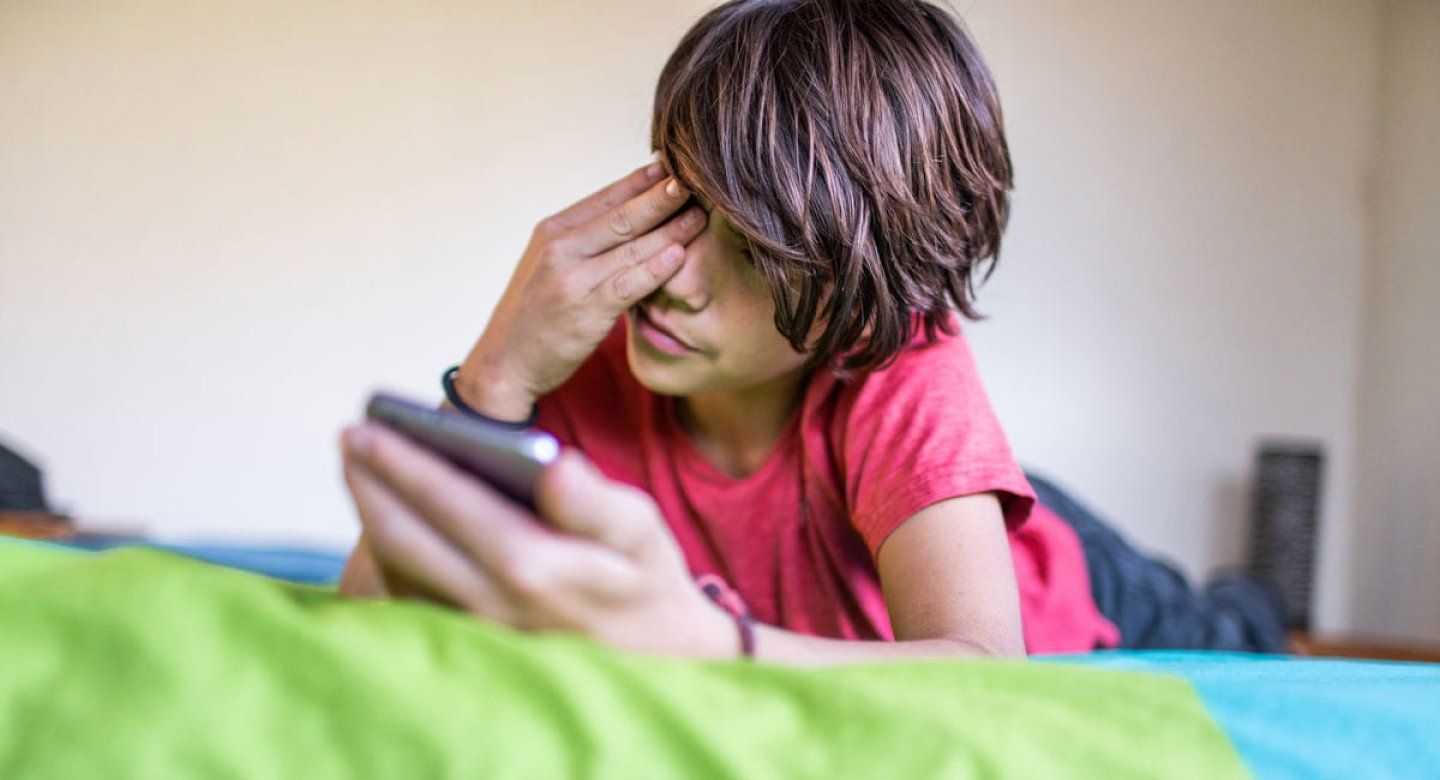Screen Time Tied to Suicide Risk for Tweens – But Don’t Panic
Learn How Parents Can Help Kids Develop Safe Screen Habits
No one can blame parents for being spooked by new research finding that tweens’ risk of suicidal behavior increases with their amount of screen time. However, lead researcher Jason Nagata, MD, of UCSF Benioff Children Hospitals, says that caregivers should view these findings mostly as a reminder to ingrain healthy screen use habits in their kids as early as possible.
So your study found that screen use increases suicide risk?
The more time kids spend using screens from ages 9 to 11 years old, the higher their odds of suicidal behaviors two years later, at ages 11 to 13. Specifically, each additional hour of screen time increased the risk by 9%. The risk was highest with texting, followed by video chatting, watching videos, and playing video games. Social media didn’t show an effect, but that may be because, technically, kids aren’t allowed to be on social media platforms until they are 13 (though some still are), so we didn’t have as much data there.
What does “suicidal behavior” mean?
It means thinking about suicide, with or without a specific plan, as well as attempting suicide. We weren’t able to separate attempts versus types of thoughts in this study. I should also note that, overall, suicidal behavior was uncommon in these young kids, occurring in just 1.38% of the 11,633 kids we studied. The risk of suicidal behavior tends to increase with age, so this could be seen as an early warning sign.
Why does screen time increase suicidal behavior?
Time spent on screens often displaces time spent on in-person socializing, physical activity and sleep – all of which are good for mental health. Screen usage can lead to cyberbullying, poor eating habits, isolation and disrupted sleep – all of which can worsen mental health. It also increases exposure to potentially anxiety-provoking or otherwise distressing content.
Is all screen time bad for tweens?
Screens can be helpful in some cases, like for kids who, say, are LGBTQ and don’t have real-life access to support, and to stay in touch with friends and family who live far away. I’d say it’s about being thoughtful about how kids engage with screens and keeping an eye on what they consume.
What can parents do to help kids use screens safely?
It’s important for parents to do what’s developmentally appropriate. For older teens, it’s about giving advice. With younger children, preteens and young teens, it makes sense to have a more hands-on approach, like using parental controls and keeping them off social media until they are 13. This time, during early adolescence, is when you set the behaviors that will help kids develop healthy screen habits later on.
What healthy screen habits do you recommend for tweens?
- Avoid screens before bedtime. We know screen use interferes with sleep, and good sleep is so important for mental health.
- Avoid snacking while using screens, to make eating more intentional; and no use of screens during family meals. That helps keep family time about connection, and also helps parents monitor their kids’ eating, which is important because screen overuse is connected to disordered eating, a mental health issue.
- Parents can also establish screen-free zones, like bathrooms and bedrooms. Kids are less likely to get into violent or harmful content in public spaces in the home.
- Parents should try to model all these behaviors for their kids, which can be the hardest part.
What questions are you still trying to answer about screen time and suicide risk?
One is whether screen use causes suicidality, or whether the increased odds of suicide is because kids who are already depressed are more prone to using screens. With this paper, we see a little more evidence that it’s screens leading to suicidal behavior, because we adjusted for mental health at baseline and we looked at the kids two years later.
Another question is, how can we identify the 1% of kids who might tip into suicidality? We need to learn more about the type of content they consume and how it might play a role.
